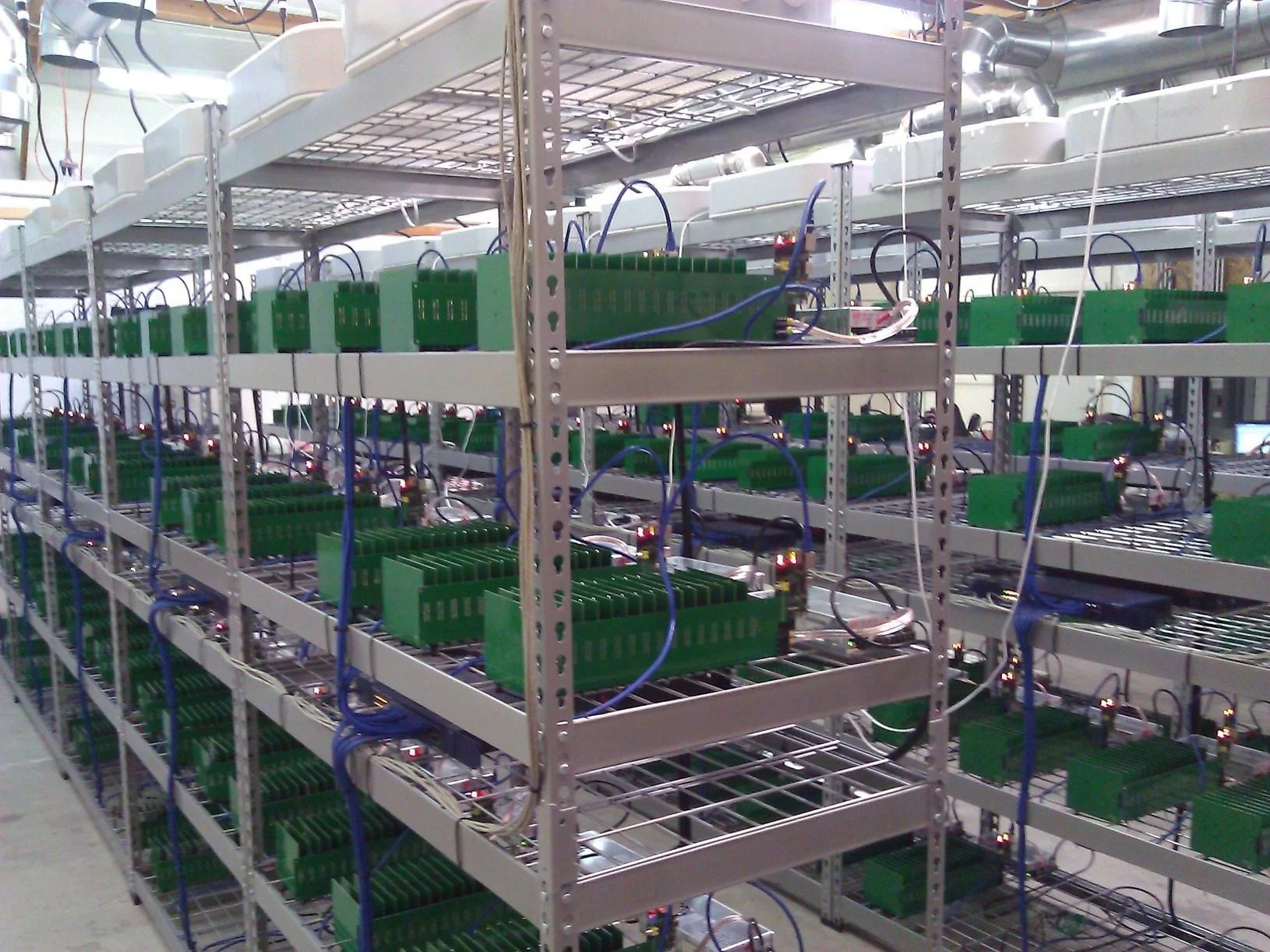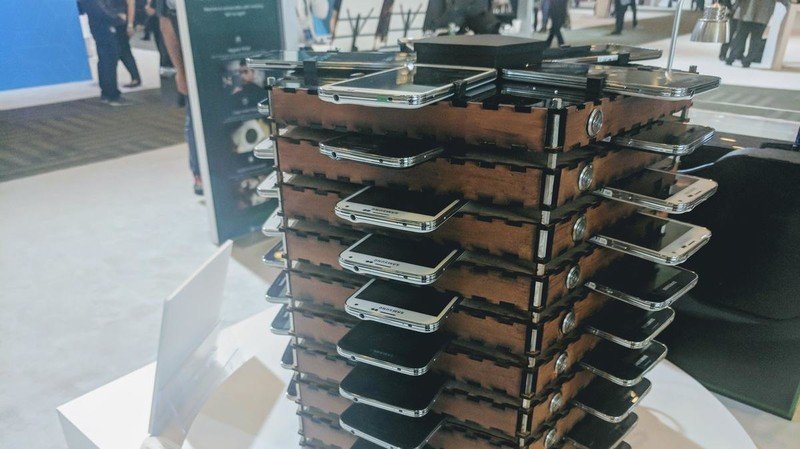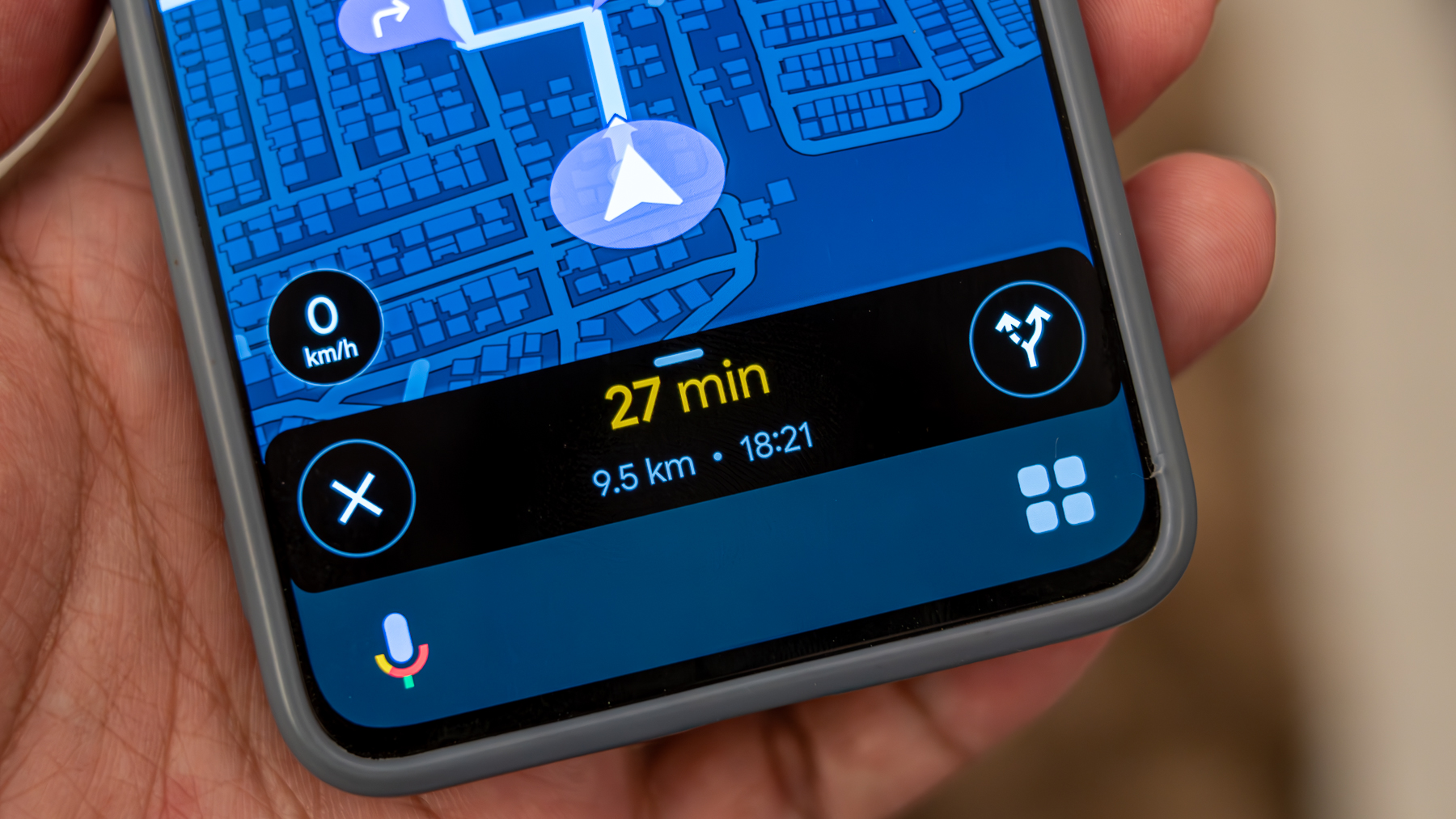Will Bitcoin and cryptocurrency mining increase the price of phones?

You've probably heard of Bitcoin, but did you know it has caused the prices of consumer PC components to skyrocket, and in some cases more than double in the past 12 months?
As crazy as that sounds, it's true. And not because everyone with a Bitcoin is building a bunch of high-end PC's top play video games or read Facebook. If it all sounds complicated and sort of like a conspiracy theory to you, you're partially right, but don't worry, we got you. We're going to break it down and ask the most important question: Could this make the prices of smartphones get any higher?
What is cryptocurrency?
It's an incredibly convoluted system of money. In 2009 Bitcoin was invented and became an alternative and virtual form of currency. Alternative as in not related to the dollar, British Pounds Sterling, Won, Yuan, Pfennigs, farthings or any other world currency, and virtual as in not backed by any real goods and just created as needed by the people who would benefit the most from its creation. Don't get too hung up on this, because this also describes the U.S. Dollar since 1968.
There are some "official" rules about what a valid cryptocurrency is defined as, even though there really isn't any person or body designated to make any rules.
- There is no central authority that issues the currency.
- The system keeps track of every unit and who owns it.
- The system decides if new units can be created, how they are to be created, and who owns any new creations.
- Ownership of a unit(s) is proven by cryptography only.
- A cryptographic record of ownership follows each unit and is changed when the unit changes hands.
- If the system gets more than one command to change ownership of any unit at the exact same time, only one transaction can be performed.

Yes, this involves a lot of computational power and cryptography is what drives and sort of defines the "system" itself. There are a lot of different systems, ranging from the original Bitcoin to the hilarious Dogecoin, which was named in honor of that incredibly cute Shiba Inu dog from the Doge internet meme. Each and every one is valid in its own right, because anyone can create a cryptocurrency. I could decide to make Jerrycoin a thing, and all I need to make it marketable is enough people and companies that sell goods and services to accept it as a valid form of payment. The price of a "coin" ranges from a few dollars to hundreds of dollars, which means trading fractions of coins is necessary. Fractions of a coin are treated the same way a whole coin is in regard to the above rules, and these are the units these rules are talking about.
Confused yet? Well, hold on because it gets better.
Because cryptography takes up so much computing power, helping to validate any transactions using your own computer is rewarded with a unit of the currency. All the data about a unit is kept throughout its life and stored in what are known as blocks. As the unit is exchanged from owner to owner, more blocks are created and they comprise a chain. That's what a blockchain is in its simplest terms. This means that if you use your own computing power to help validate transactions, when you successfully compute a cryptographic hash that can be used in a block you get paid by the organization that manages the transactions.
Be an expert in 5 minutes
Get the latest news from Android Central, your trusted companion in the world of Android
Cryptocurrency is a big business even of the concept doesn't make sense in a lot of ways.
Did I mention that this is incredibly complex? If you want to understand all the nuances of cryptocurrency, I'd suggest starting at Reddit and keeping an open mind. For the basics, you can think of it like so:
I, and a small group of my friends create a virtual currency system that adheres to a few basic rules so people will trust it. I talk to other people and vendors of goods and services and convince them to participate and accept this new currency as a valid form of payment. To secure my virtual currency, cryptography is used to validate every transaction no matter how big or how small and the record of it all is attached to every unit. Because generating crypto hashes takes an immense amount of computing power, I create software that allows a pool of computers to work at it and let you help find the hashes. When you find one, you are paid with a unit of my new currency that can be spent anywhere that will accept it and administered through its own market.
Some people think this is the best way to keep track of your wealth. Others like it because it's virtually anonymous (which is why others, including some governments, dislike it). And of course, some think it's all crazy and makes no sense when someone like me can just invent my own system of currency. The truth is probably a mix of all the above somehow, but you need to understand that it's a real thing and can be quite valuable.
Crypto mining has killed the DIY PC industry

I like to play video games, and I like to do it at my computer desk instead of an Xbox or PlayStation. Lightning struck my house recently and a surge protector didn't do its job so my gaming PC got fried. After haggling with the insurance company I got some money to build a new one and quickly found out I was about $1,000 short of what I needed to build one as good as the one that fried — not because the insurance company ripped me off, but because the demand for components is so high, retailers can charge anything they want and still sell every piece they can get hold of. And they do, naturally.
Welcome to the world of supply and demand. I hate this world.
The blame for this price boom? Crypto mining. It just so happens that the processing power and memory to mine crypto hashes for virtual currency needs two important parts: a GPU to do the calculations and some RAM to run the program. It can be lucrative to mine these hashes if you build enough machines to mine them quickly, so people are buying video cards and sticks of RAM by the hundreds whenever Newegg or any other retailer can get them.
Newegg has a hard time getting them because companies like Samsung that make "good" RAM modules (with the right type of error correction and rendundancy) can't supply them to companies like Crucial that assemble them onto a PC board and sell them to Newegg. The same goes for GPUs from AMD or NVIDIA, which are put on PC boards to make graphic cards. It's the law of supply and demand at work, and the pair of video cards I paid about $950 for a few years ago now each cost $700, and newer models sell at double the manufacturer's retail price. Prepare to see the same thing happening to hard drives as newer currencies can use free storage space to help calculate hashes.
It was totally worth the extra $1,000 to play Far Cry 5 in 4K, though.
Miners take these parts and put them in a PC backplane in large groups to crunch numbers 24 hours a day, seven days a week. And they make a lot of money so they keep buying more and more of them to build more mining rigs and the cycle repeats itself until I have to put an extra $1,000 over my initial budget into a PC that can play Far Cry 5 at 4K instead of buying it for the PlayStation 4. I'm lucky that I had room on my credit card and permission from my wife to do it because a lot of people can't afford the extra costs and just aren't building computers.
This will sort itself out eventually. Companies like AMD and Samsung have developed dedicated mining boards that use ASICs (Application Specific Integrated Circuit) to run advances hashing algorithms, but right now it's cheaper to buy video cards from Newegg. Mining ASICs will get better and the costs will come down until that changes and it becomes more profitable to buy them instead of a big box of NVIDIA graphics cards. Hopefully, that happens soon and we don't become adjusted to inflated prices that might not come back down to reality if that happens.
The effect on smartphone prices

Your phone uses a GPU and RAM, and storage and co-processors and everything else a computer does. That's because your phone is a computer and needs the same parts. Is this going to make my next phone even more expensive?
That's a really valid concern as we see phones already approaching the $1,000 mark. And that's using parts built and sold before this crazy mining boom happened and nobody wants to see the cost of these parts double. Not even the companies that make them, because that will lead to the same thing it did in the DIY PC market and people will stop spending the money.
The answer is yes, it will affect the cost of phones being manufactured right now. But don't freak out, because it's not going to affect it very much at all for a few different reasons.
Even in a worst-case scenario, the carriers and big players like Samsung or Apple would never allow the prices of phones to double.
It will make a small difference in the cost of RAM. But even if the cost of a RAM module doubles, we're only talking a few dollars at most because of the way a phone is built and how it's different from RAM sticks you put in a PC. Samsung makes good memory modules. It's the same Samsung that builds phones, but not directly associated with the mobile division because Samsung is a huge company that builds phones, electronic components, refrigerators and tanks (the armored battlefield ones that make big booms from big guns). The division of Samsung that makes RAM modules sells them to companies that put them on something a consumer can use, including the division of Samsung that builds phones.
You can mine coin with a phone but you will lose money.
Because Samsung exists only to make a profit like every other company, they will build what they can sell the most of to maximize profits. That means the smaller modules used in a smartphone board are less lucrative than the larger modules used for PC RAM, and since Samsung does not have an infinite number of assembly lines to build them, RAM for smartphones will become scarcer and be priced accordingly.
Samsung (as well as other companies that make memory modules) can build enough to meet demand because they aren't adding the extra step of assembling them into another thing, and once off the line and batch tested they can go straight out the doors. But the other Samsung that makes the phones does need that extra step, so supply may become more limited, which means prices may increase. But not by much, as a RAM module for a phone costs about $1 when buying in bulk and the only extra costs are market-driven.
The GPU in our phone won't drive prices up in any way, thankfully. That's because the companies that make the GPU for a phone aren't the same companies that make the kind crypto miners are buying. The bulk of phones sold use a Mali-branded GPU that's a product of ARM (the same ARM that designs processors). The rest mostly use an Adreno GPU, which used to be an AMD product but is now designed by Qualcomm.
Semiconductor factories in Asia that make Mali or Adreno GPUs aren't the same factories that are building NVIDIA Pascal GPUs or AMD Polaris GPUs and it's impractical to string a bunch of phones together and mine coins with them. But Samsung shows us that you could, and Raspberry Pi mining rigs (which use a Texas instruments processor and a Mali GPU) are real things that aren't efficient enough to make any money at all.
If you want or need to build a new gaming PC, this whole mess stinks. But it doesn't mean the Note 9 will cost $1,800 instead of $900, though it might be $915.

Jerry is an amateur woodworker and struggling shade tree mechanic. There's nothing he can't take apart, but many things he can't reassemble. You'll find him writing and speaking his loud opinion on Android Central and occasionally on Threads.
